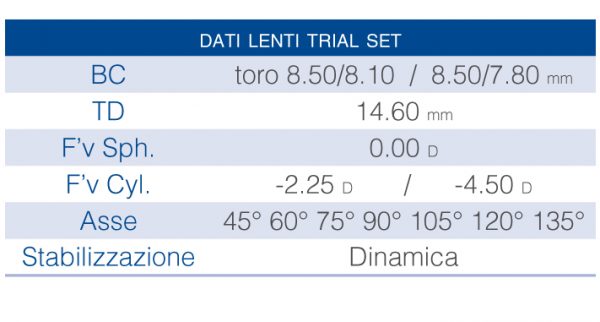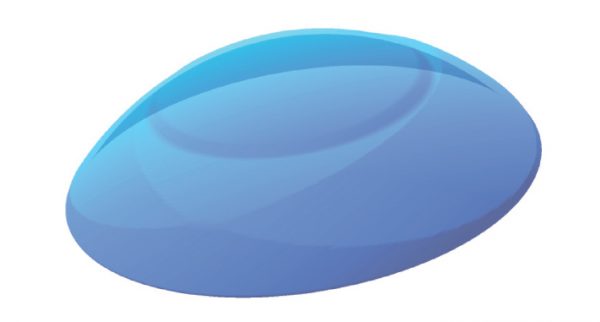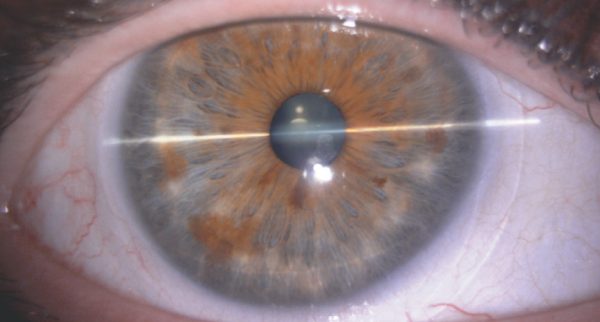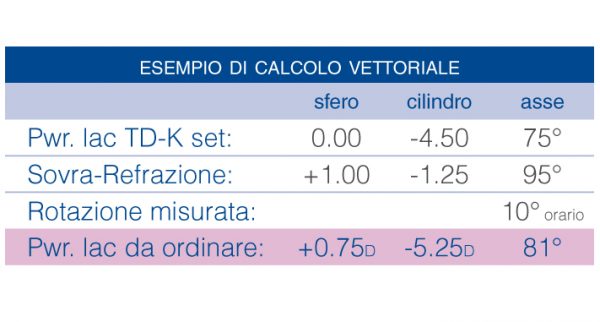td-k kc soft
The TD-K application protocol is suitable in the non-industrial cases of Keratoconus (KC) and Marginal Pellucid Degeneration (PMD), when it is possible a good visual recovery with maximum spherical-cylindrical correction. The bi-toric TD-K lenses are selected in relation to refraction data and visus and when the subject highlights adaptation problems (discomfort) with other corrective solutions, such as glasses or lac R(GP).
The special design, dedicated for ectasias, in combination with Hydrogel polymers and Silicone-Hydrogel ensure physiological respect during the wear.
patient selection
Determine the ophthalmic correction for the best visus (BCVA): if value is greater than 20/40, even in the presence of a spherical-cylindrical requirement of high value, this result can be improved by the application of a lac TD-K.
The Bi-Toric option ensures visual performance thanks to the correction of residual astigmatisms.
fitting procedures
- From the TD-K Trial-Set, select a lens with the corrective axis and cylinder closest to the refraction.
- Wait 30’ from insertion, then evaluate:
- Dynamic to wink and push-up test.
- Corneal coverage ratio: TD vs HVID.
- Alignment of the repere signs and possible rotation
- Detect the BCVA in subjective over-refraction, and define the optimal values: Sphere, Cylinder and Axis.
- If BC and/or TD are not adequate, select the new parameters to stabilize the lens.
- If there is a rotation, replace the trial lens compensating the axis as a normal soft toric.
final lens order
Using the TSLAC cross-cylinder software, determine the correction of the lens to be ordered:
- To the power of the proven lac to add the data of the over-refraction and to insert the entity and the axis of rotation of the lines of reperx.
- Inform the Professional Service of the result obtained from the software and the data relating to the power and axis of the TD-K lens tried.




